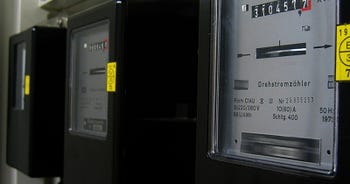What is LPG and how is it useful for businesses?
LPG (or Liquefied Petroleum Gas) is a liquidised flammable gas used for fuel. It’s a by-product of natural gas processing and oil refining, turned into a liquid using immense pressure.
LPG is a low-carbon fuel that’s ideal for heating homes and businesses that are off the grid. LPG can also power appliances operating equipment like forklift trucks, along with many other commercial uses.
Because it’s a low-risk, low-cost energy option, LPG can help your business make steps towards going green. And with a firmly established supply chain, it’s a safer option with many of the newer low carbon fuels yet to catch up.
In this guide, we break down how LPG could fuel your business for the future.
What is LPG used for?
Used by businesses and homes alike, LPG offers a greener alternative to other fossil fuels, helping to reduce your carbon footprint. While caravan parks, agriculture and other off-the-grid industries benefit from LPG, it can also power more industrial applications like incinerators, kilns and combustion engines.
1.Heating
LPG can be used to safely heat homes and businesses that don’t have access to mains gas supply. Its high efficiency and non-toxicity make it perfect for portable heaters, industrial space heaters, or fuel for a boiler in a central heating system.
Most boiler manufacturers have an LPG option. You can use the system just by swapping out the boiler for one with the right components. Central heating provided by LPG is classed as a ‘wet’ heating system. This means it heats water as a conventional boiler to power radiators and provides hot water to taps and showers.
2. Appliances
LPG is used in a wide range of appliances, from barbecues and heaters to water pumps and generators. It’s super portable, so a fixed supply doesn’t restrict its uses.
LPG provides a fast and regular heat for cooking in a busy commercial kitchen. It’s a great alternative to electric appliances, which take longer to heat up.
3. Machinery
You can use LPG in combustion engines to operate machinery such as forklift trucks. Not only can you reduce your carbon footprint, but your fleet can also run safely and cleanly in enclosed environments as well as outdoors. You can convert vehicles to LPG to create a cleaner and greener alternative fuel source. LPG is used across many sectors, including construction, woodworking and cleaning. It is also commonly used in agriculture with a range of benefits. “Wet” heat helps create ambient temperatures for poultry, while techniques such as “flaming” use a controlled flame for weed and pest control.
What types of LPG are there?
There are three main types of LPG – Butane, Propane and BioLPG. Each gas has different properties making them suited to particular uses.
1. Propane
Propane functions better in lower temperatures making it most suited to use outdoors or where it can be kept suitably cool. It’s a great choice for operating tools like forklift trucks and for mobile cooking in caravans and catering vans.
2. Butane
Butane is best for indoor use as it doesn’t fare well in the cold. It’s ideal for appliances used in catering and indoor heaters while also effective as a refrigerant. When it reaches its boiling point and returns to its gas state, it decreases the appliance’s temperature. Butane has a low boiling point giving it a remarkable ability to cool.
3. BioLPG
BioLPG is a greener alternative to propane with many of the same properties but boasts coming from 40% renewable energy sources. It’s produced as waste material from plant and vegetable renewable feedstocks. The waste gases are captured and purified for an identical end product to propane.
How is LPG made?
Although Propane and Butane are naturally occurring, LPG is a by-product of the processes used to refine and extract petroleum and natural gas.
When natural gas is extracted from the ground, it’s not the only thing that comes out. Propane, isobutane and butane are also found in the gas well; they can be extracted from the gas stream and processed into what we call LPG. This method of collection accounts for almost 60% of LPG produced worldwide. The remaining 40% is a co-product of the oil-refining process collected at numerous stages throughout.
After it’s extracted, LPG is placed under pressure to turn it into a liquid, making it much easier to store and transport. In its liquid form, it can be stored and released much like an oil tank would, which can be refilled and reused.
What’s the difference between LPG and LNG?
While LPG is a by-product of other processes, LNG is natural gas methane that has been chilled to a very low temperature until it turns into a liquid through a process called cryogenic liquefaction.
LNG is a great alternative to natural gas. This is because in its liquid form, it’s non-pressurised and takes up 600 times less volume, making it less volatile and easier to store.
LPG is easier to transport than LNG because LNG needs to be stored at incredibly low temperatures. LNG is much safer in its liquid form than when it is a gas because it won’t ignite.
Once it’s reached its destination, it is sent to a regasification plant and then piped to the end user. Like LPG, LNG can be a great option for locations that are off the grid, reducing the need for expensive pipelines.
Is LPG a better alternative to natural gas?
Although essentially sourced at the same time, natural gas and LPG have some big differences.
LPG is:
- More efficient — Less gas is required to produce the same amount of heat thanks to its higher calorific content when compared with natural gas. While it may cost more per unit, you can use it more efficiently.
- Safer – LPG is heavier than natural gas, so when there is a leak, it won’t spread out as quickly, giving you time to identify the leak and deal with it.
- Easily transportable – In its liquid form, LPG is easier to transport in high volumes and can reach places without access to mains gas.
- Greener – Whilst LPG may emit higher levels of CO2 than natural gas when it is burned, it takes far less energy to extract in the first place than natural gas does.
How much does LPG cost?
If you’re off the grid, LPG can save you money on your energy bills, as it’s by far the cheapest option compared to running everything on electricity or by burning oil. It might be more costly than natural gas but has many benefits if you’re looking for a greener alternative for your business.
The cost of LPG comes down to how much you need to use, the current market conditions and the tariffs available. The best way to find out what you could save is to compare business gas prices. At Bionic, we work with our panel of trusted gas suppliers to secure the very best deals for you.
Should I make the switch?
LPG is a low-carbon, alternative energy source used across a wide range of business sectors. It’s versatility, green credentials, and cost-saving potential makes it an excellent option for businesses looking for something mobile to keep them powered efficiently.
Want to know more about business gas? Get in touch with the Bionic team of energy specialists who’ll help you to find the best solution for you and your business.








